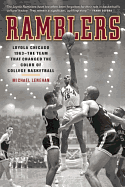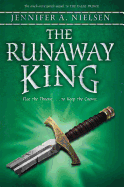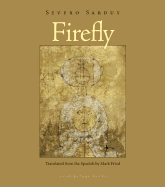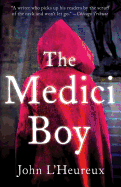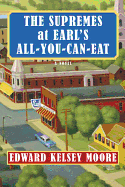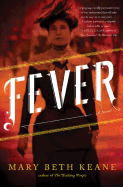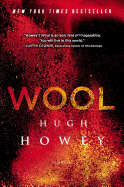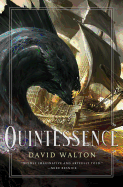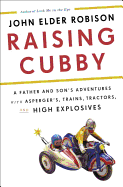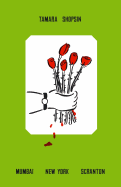Tuesday, March 19, 2013
Miranda Kenneally's novels--Catching Jordan, Stealing Parker and, most recently, Things I Can't Forget (reviewed below)--take place at Hundred Oaks High in the town of Franklin, Tenn. The small town of Franklin is as much a character as Jordan Woods, Parker Shelton, Drew Bates or narrator Kate Kelly in Things I Can't Forget.
 Readers tell Kenneally her books are like Friday Night Lights set in Tennessee. "I can see how Franklin is like Dillon, Tex.," the author said. "I have worked hard to show the socioeconomic climate; people seem to be either super rich or really poor." Growing up in Tennessee, she saw that everyone was divided into distinct groups and how hard it could be to cross those lines.
Readers tell Kenneally her books are like Friday Night Lights set in Tennessee. "I can see how Franklin is like Dillon, Tex.," the author said. "I have worked hard to show the socioeconomic climate; people seem to be either super rich or really poor." Growing up in Tennessee, she saw that everyone was divided into distinct groups and how hard it could be to cross those lines.
Although religion is a relatively rare theme in YA literature, it's a thread in all Kenneally's books. "It was a huge part of my upbringing," the author explained. "Everyone belonged to a church and nobody missed Sunday School. The idea of faith intrigues me--especially the extremes to which people will go to make other people believe what they believe. I wish people could be more accepting of others." The dilemmas that arise at Hundred Oaks High are a mix of fact and fiction. The situation in Stealing Parker, for instance, was fabricated--though Kenneally admitted, "I have had people ask if the student-coach relationship was based on me and the baseball coach at my high school. Ew! Just no." On the other hand, the author did have a friend who got pregnant and had an abortion, as in Things I Can't Forget.
From the age of eight, Kenneally knew she wanted to be a writer. "I spent my recesses writing really bad stories about poodles that wanted to join the circus. I worked hard, figured out what I needed to know, and went after it." --Jennifer M. Brown, children's editor
Birds of Paradise Lost
by Andrew Lam
The 13 stories in Andrew Lam's Birds of Paradise Lost soar like birds in mid-flight, bridging the space between the dreamscape of Vietnam and the glass and steel of "Gold Mountain" (Cuu Kim Son, a Vietnamese name for San Francisco that also serves as a synecdoche for the United States). Lam, a Vietnamese-American writer and journalist, acknowledges the profound losses of his parents' generation, but also embraces the buoyant desires of his adopted country--a "mysterious and vast garden... its soil made fertile by love and its endless foibles."
Illustrating the contradictory yet porous divide between East and West, Lam's stories reveal indelible, quirky insights. "Minh oi," a term of endearment in Vietnamese that means "my body," affirming the transcendent unity of husband and wife, is linked to metaphors of sexual bondage in the gay S&M world of "Love Leather." Former boat refugees, now affluent, become "yacht people"; a father's failed war becomes his son's passport to a compassionate life. The most accomplished among this vivid flock of stories, however, is "Everything Must Go," which reenacts the story of Orpheus and Eurydice in the dark basement of an estate sale as two lovers are forever divided by their seemingly intractable worldviews. He mourns his lost Eden through broken relics, while she revels in rare bargains as a way to redeem her future. --Thuy Dinh, editor, Da Mau magazine
Discover: Lam's short stories offer a tragi-comic portrayal of Vietnamese-American lives as an ever-evolving process of resistance and assimilation.
Firefly
by Severo Sarduy, transl. by Mark Fried
Skinny, big-headed Firefly is the eponymous child hero of Severo Sarduy's hallucinatory invocation of pre-Castro Cuba, an endearing waif whose tale begins in the midst of a hurricane, as he kills his entire family by putting rat poison in their tea. Two retired luminaries of the island's medical community take charge of the boy murderer, and Firefly begins work as an errand boy in a nightmarish document depot where old files and papers are his only blankets. He's still a kid. He has bad nights. He's not above wetting the old moth-eaten couch where he's allowed to sleep.
By the time Firefly gets a "fuzzy shadow above his lips," he falls in love with the enchanting Ada, a frisky orphan girl with red hair. He undergoes his sexual deflowering at the hands of two plump young whores. He falls off a slippery pier into a bog swarming with green insects. Unable to stop crying, Firefly finally approaches the legendary Pavilion of the Pure Orchid for the grim revelations of the finale.
Bordering on magical realism, Firefly remains grounded in the grim, realistic details of destitution and poverty, the sights and sounds of a fading, peeling past. It's a sticky world of sugar and rum, with stains and holes and burn marks in its onetime splendor.
Sarduy's tropical island is a nightmarish labyrinth of poverty and corruption, where Firefly is an unwilling pawn. The boy remains a lonely, likable mystery at the center of it all, and his feisty struggle to survive on his own makes for a lyrical farewell to Sarduy's own childhood and a lost way of life. --Nick DiMartino, Nick's Picks, University Book Store, Seattle, Wash.
Discover: A poetic, hallucinatory invocation of pre-Castro Cuba lies within the tale of a big-headed orphan boy who poisons his family.
The Medici Boy
by John L'Heureux
John L'Heureux did a considerable amount of research to re-create the world of 15th-century Florence in The Medici Boy, a story of love, art and murder. It's narrated by Luca Mattei, the son of a rich merchant and his Dalmatian slave girl, late in life. As a youth, Luca is sent to a monastery, where he is able to survive the Black Death, but sexual indiscretions force his departure.
Skilled at drawing, Luca apprentices to a painter in Florence, "that center of the arts, where painters and sculptors seemed to spring from the ground," and later with Ghiberti (whose bronze doors for the city's cathedral are famous to this day). He then has the good fortune to end up in the bottega (workshop) of Donatello, the "chief artisan of Florence," and this is when L'Heureux's story really begins.
Luca is thrilled and frightened watching Donatello sculpt in a trance-like state, his fingers almost floating as he works. L'Heureux beautifully captures the vibrant art world of 15th-century Florence and the personalities of the city's amazing artists, as well as Florentine power brokers like Cosimo de' Medici. We learn about the intricacies of sculptors' working methods in this era, as well as the hypocritical attitude toward sodomy (including the brutal methods for torturing and executing those convicted of it). L'Heureux's insightful portrayal of Donatello's creation of his majestic bronze David with Goliath's head--"the first naked sculpture in perhaps a thousand years"--is superlative. --Tom Lavoie, former publisher
Discover: L'Heureux (Desires) provides a virtual art history class focusing on Donatello and Renaissance Florence.
The Supremes at Earl's All-You-Can-Eat
by Edward Kelsey Moore
A decades-long friendship between three women forms the backbone of Edward Kelsey Moore's funny and tenderhearted debut novel, The Supremes at Earl's All-You-Can-Eat. For four decades, Odette, Clarice and Barbara Jean have had a standing date every Sunday at Earl's All-You-Can-Eat diner in Plainview, Ind.; as their heartbreaks, marriages and the most eviscerating of tragedies unfold, the neighborhood diner sets the scene for recurring dramas with a cast of unforgettable characters.
The story moves back and forth between past and present, fleshing out the relationship between the three women, nicknamed the Supremes by their 1960s high school classmates, from its unlikely beginnings through the increasingly complex developments of later years. Each of the Supremes faces a challenge that will be the ultimate test of their strength. Emerging as the heart of the novel is Odette--fearless, no-nonsense and immensely loyal. Like her mother, Odette has begun to see ghosts, and they've started hinting that she is next. After decades of marriage to the cheating Richmond, Clarice must decide how she is going to live the rest of her life, while Barbara Jean tries to find a way to reconcile her past mistakes. Along the way, the women will discover that middle age can be a rebirth rather than the end of one's youth.
Moore expertly combines tragedy and comedy in a way that feels fluid and natural, creating a world that is internally consistent and rich. Perhaps the most remarkable quality of The Supremes is love: the author's love for his characters, even the most flawed, shines from every page. --Ilana Teitelbaum, book reviewer at the Huffington Post
Discover: A funny, tenderhearted debut novel about the enduring friendship of three women, and the vividly drawn town in which their dramas take place.
Fever
by Mary Beth Keane
In 1883, Mary Mallon's grandmother saved enough money to send her from Ireland to New York City. Fourteen years later, Mallon was incarcerated by the city's health department as an asymptomatic carrier of the typhoid pathogen--and was forever after known as Typhoid Mary. Mary Beth Keane (one of the National Book Foundation's 2011 "5 under 35" honorees) tells Mary's story in Fever, a novel as rich in drama and the turn-of-the-20th-century atmosphere of New York as Erik Larson's The Devil in the White City is of Chicago.
Mary came to the U.S. with nothing but her knack for cooking. As Keane tells the story, that came from her grandmother, who taught her early on "the best way to tuck the turnips and potatoes around the meat." With such skills, the feisty Mary made her way through the best kitchens in the city and suburbs. Unfortunately, she left a trail of typhoid victims in every household--until a relentless investigator hired by one of her employers collected enough evidence for the city to lock her up without trial or recourse.
Keane's story of Typhoid Mary's life, culminating in her death at an isolated quarantine hospital on North Brother Island in New York City, is part science mystery, part love story, part legal thriller--but, finally, just a damn good novel. "They blamed her because she was opinionated," Keane writes, "and Irish, and unmarried, and didn't bow to them." Now that's a character to build a story around. --Bruce Jacobs, founding partner, Watermark Books & Cafe, Wichita, Kan.
Discover: An engrossing novel of the life, loves and legal battles of Typhoid Mary.
Science Fiction & Fantasy
Wool
by Hugh Howey
Hugh Howey's Wool was originally published as five novella-length e-books that he wrote while working at Scholars' Bookshop in Boone, N.C. His novel is set in the far future, with humans living in an enormous silo under the ground in a society long since stratified to ensure their own survival. There is dissent in the air, though; glimpsing freedom through the pixelated screens piped in from the ruined outside, a few souls risk everything to find the truth.
Wool begins with a melancholy that pervades every page, as a bereaved sheriff makes the inexorable way up the silo to his death, and from there it spins an action-packed, suspenseful yarn with intensity and depth. Who built the silo? What lies outside? Who truly runs things? No character is left unscarred by the events; many will not make it all the way to the end.
Mayor Jahns tries to talk Sheriff Holston out of throwing his life away; she is herself fated to find out how far those in power will go to keep the secrets of the silo safe. Juliette, a young mechanical engineer from the deepest levels of the silo, takes the stage only in the third act, but she quickly becomes the focus of Howey's tale. A hasty denouement doesn't spoil the brilliance of this post-apocalyptic novel. The characters are fully realized and well written, and the story itself is gripping from start to finish. --Rob LeFebvre, freelance writer and editor
Discover: Hugh Howey's brilliant first novel is bursting with suspense and deep themes reminiscent of the best in science fiction.
Quintessence
by David Walton
Quintessence is a historical fantasy novel featuring the best of both genres, as David Walton turns the religious turmoil of mid-16th-century Tudor England and the European Age of Exploration into the setting for an utterly addictive, wildly imaginative adventure. Men of science, faith and alchemy are all confounded when Admiral Chelsey returns to England from a three-year sea voyage, his ship full of calcified dead men and a hull of sand, rocks and seawater. As the dying admiral tells an impoverished alchemist a tale of a paradise-like island perched on the edge of the world, royal physician Stephen Parris gets caught up in this mystery by dissecting a crew member's body.
The quintessence of the title is the ultimate alchemical element, a foundational creative force with magical powers. Christopher Sinclair, the alchemist, has spent his life ruthlessly seeking this element and its ability to conquer death. Chelsey's ship, and Parris's personal fortune, may be his only chance to reach the world's enchanted edge and find it.
Walton's fantasy, set in a world where the earth is flat and alchemy is real, is superbly intertwined with the real emerging scientific consciousness of this historical period. As Parris and Sinclair partner with other learned gentry and a party of Protestant refugees to sail across the Western Ocean, the biological and mystical attributes of the creatures they encounter feel authentic. It's as if Jules Verne had written fantasy instead of science fiction. --Tobias Mutter, freelance reviewer
Discover: A wildly imaginative historical-fantasy adventure set during the Age of Exploration.
Biography & Memoir
Raising Cubby: A Father and Son's Adventures with Asperger's, Trains, Tractors, and High Explosives
by John Elder Robison
John Elder Robison has written two books on his experience with Asperger's syndrome: Look Me in the Eye and Be Different. In Raising Cubby, he brings his warmth, intelligence and humor to an equally personal subject: his own son.
Cubby is the nickname Robison gave his young son, Jack, when born, based on his pet name for the boy's mother: Little Bear. Although the two are no longer married, the book is dedicated to her and her tireless efforts to raise their son while dealing with her own Asperger traits.
Robison focuses on a high-profile case in which the teenage Cubby was prosecuted for videotaping the explosions he set off as chemistry experiments. While the local district attorney tried to depict Cubby as a terrorist-in-training, Robison, Cubby's mother, their neighboring community and a very high-priced lawyer attempted to present the boy they knew: quiet, peaceful and incredibly intelligent.
The trial, which ended in 2009 with Cubby's acquittal, grounds the memoir, but what fills most of the pages is the love, joy and frustrations of raising a child, with or without Asperger's syndrome. Robison discusses, plainly and transparently, the ways in which his son challenged him to become a better community member and father every day of their remarkable lives together. --Rob LeFebvre, freelance writer and editor
Discover: Robison's memoir of raising a child despite their shared atypical neurological makeup is full of insight, kindness and humor.
Mumbai New York Scranton: A Memoir
by Tamara Shopsin
Tamara Shopsin is a talented young Brooklynite whose witty illustrations appear in the New York Times Book Review and other high-profile publications. She spends Saturday mornings making breakfast--pancakes, bacon and "unholy amounts of eggs"--at her father's restaurant, which was made famous by his outsized personality (featured in two New Yorker articles by Calvin Trillin). She rides her bicycle everywhere and, in her spare time, she makes novelties like matchbooks and paper umbrellas to sell online, warehousing them in the Scranton home she shares with her photographer husband, Jason.
Shopsin's life may sound like an urban cliché, but Mumbai New York Scranton is a fresh, engaging memoir of traveling with Jason in India and what happens when they return. Written in an episodic, stream-of-consciousness style, her seemingly artless approach belies a lively and observant mind. Her descriptions of life with Jason are especially sweet and affecting, while what unfolds after their return to New York is harrowing and tense. Her portrayal of her quirky family, is vivid and loving; as an urban social history spanning the generations, it is sheer pleasure.
Shopsin's use of the present tense provides an urgency that sometimes, especially in earlier chapters, comes at the expense of clarity and context. On balance, however, this is a terrific and winning memoir, a love letter to a city and a family. Shopsin can add writing to her list of talents along with drawing, crafting, cooking and her egg-cracking prowess. --Jeanette Zwart, freelance writer and reviewer
Discover: A terrific and engaging memoir full of love, life, humor and worry; a love letter to a city and a family.
Sports
Ramblers: Loyola Chicago 1963--The Team That Changed the Color of College Basketball
by Michael Lenehan
Michael Lenehan's Ramblers chooses one college basketball team, and one season, to illustrate a sea change in the sport--and in the United States. The Loyola Chicago team of 1963 was not the first to send black and white players out on the court together, but Lenehan makes an excellent case for the significance of this particular team's actions at a key moment in the national struggle for civil rights. He examines their competition over the course of the season, focusing on two teams in particular: Mississippi State, whose players had to sneak out of state due to a ban on playing teams with nonwhite members, and Cincinnati, which was also an integrated team, but one with an increasingly antiquated playing style.
Relying on primary sources and interviews to study a handful of individual players, coaches and administrators, Ramblers passionately evokes the beauty of a great game in a time of great change, and works as a metaphor for changes taking place across the nation as well. Lenehan handles the game with an ease and comfort that indicate his expertise, and Ramblers combines his passion for basketball with an intimately detailed history--including a deeply moving digression into the 1962 riots at Oxford, Miss. Lenehan eventually follows each of his subjects through to the present (or the ends of their lives), giving Ramblers a feeling of completeness. Throughout, he maintains a sense of fun appropriate to a book that's ultimately about the antics of college kids. --Julia Jenkins, librarian and blogger at pagesofjulia
Discover: A dynamic, emotional study of one college basketball team's role in the civil rights movement.
Children's & Young Adult
The Runaway King
by Jennifer A. Nielsen
This second entry in Jennifer A. Nielsen's Ascendance Trilogy begins immediately following the events of The False Prince, and proceeds at the same breakneck pace.
The newly installed King Jaron, tired of all the politicking going on in the guise of honoring his family at their funeral, steps into the courtyard and climbs a tree. He spies a suspicious character below who turns out to be Roden ("Once my friend. Then my enemy. Now my assassin"), one of four orphans who vied for the throne. Roden has joined the Avenian pirates who were commissioned to kill Jaron four years ago. He delivers this message: Jaron must surrender to Roden and the pirates in 10 days. If he does, the pirates will leave the kingdom of Carthya "untouched." But if Jaron refuses, the pirates will destroy Carthya to get to him. Jaron suspects that Avenia's King Vargan is also involved--since the pirates' plot requires the aid of the Avenian Army. Carthya's regents want to avoid war by placing Jaron in hiding. Jaron suspects his regents will betray him, so he takes matters into his own hands.
Nielsen ups the ante, as Jaron sees no other way to convince his kingdom he's fit to reign than to come face to face with the pirate king who planned to kill him four years before. Her skill for plotting and characterization lives up to the high standards she set with The False Prince. Readers will want to read straight through without interruption. --Jennifer M. Brown, children's editor, Shelf Awareness
Discover: In the exciting sequel to The False Prince, the newly installed King Jaron comes face to face with the murderous pirate king.
Things I Can't Forget
by Miranda Kenneally
With this third novel set at Hundred Oaks High in small-town Tennessee, Miranda Kenneally (Catching Jordan; Stealing Parker) delivers her best work yet.
The book opens with 18-year-old narrator Kate Kelly buying a pregnancy test for Emily, her best friend of 15 years. From the first line, readers get a strong sense of Kate's background and personality: "Girls like me do not buy pregnancy tests." From there we shift to Cumberland Creek summer camp, where Kate will work as a counselor. It is immediately clear that Kate's upbringing heavily involved her church and her faith, and the rude awakening of life outside her youth group forces her to work past many of her long-held opinions and to accept others (and herself) for who they are. Kate's initial attitude may make it hard for some readers to connect with her, but as she learns more about herself and the world around her, she becomes more sympathetic, and readers will appreciate her journey and undoubtedly become fans of the story.
Kenneally's skill shines as Kate evolves as an individual. The growth isn't instant or easy, and each character and scene plays a part in Kate's development. Readers will fawn over Matt, a love interest who doesn't like to wear shoes and chooses to introduce himself as "Marsupial Matt" during a game at camp. Those who have read Kenneally's previous books will enjoy the bonus cameos from characters introduced earlier in the series. --Shanyn Day, blogger at Chick Loves Lit
Discover: Miranda Kenneally's best book yet, starring a teen who changes her views while working at a summer camp.



